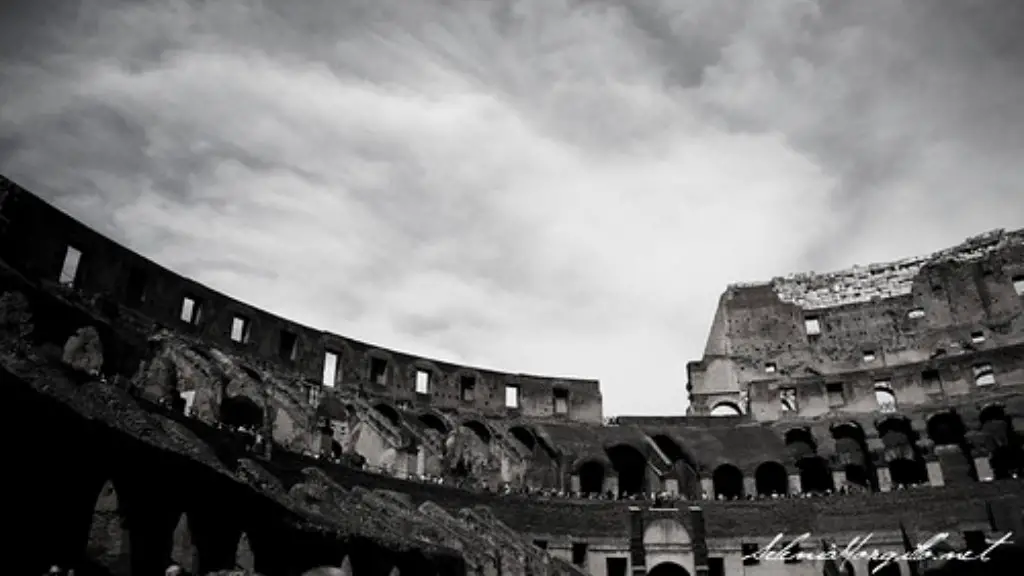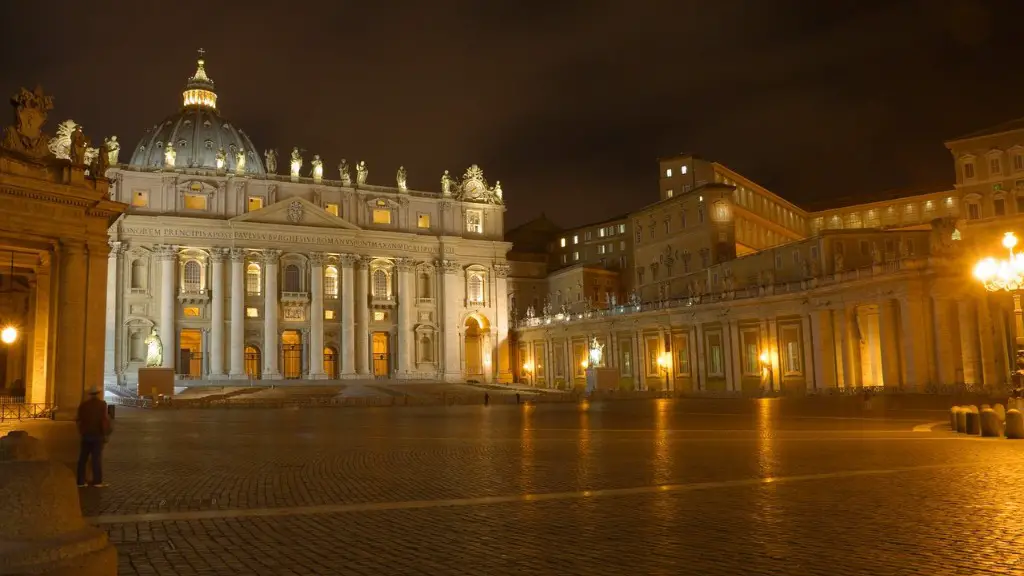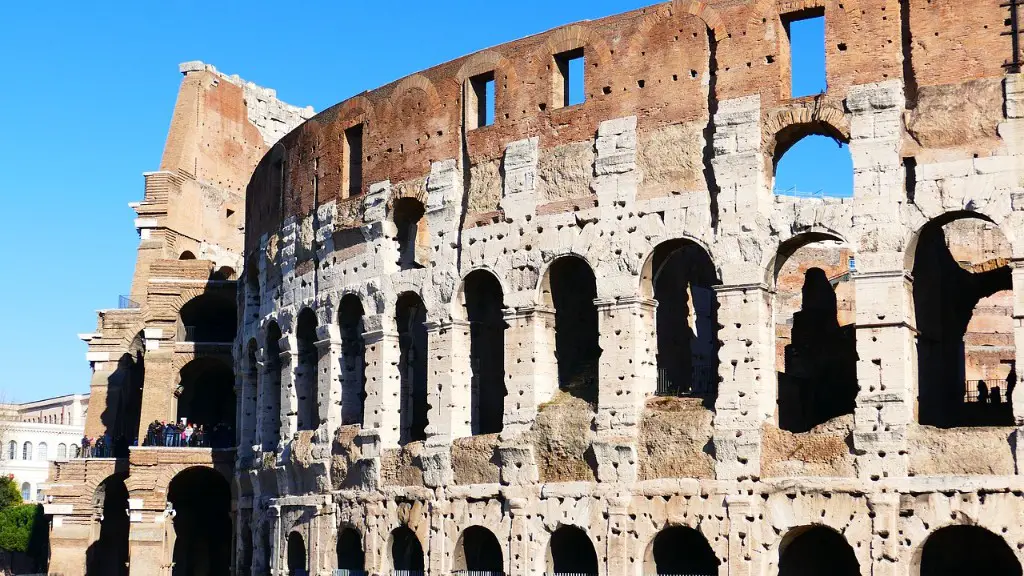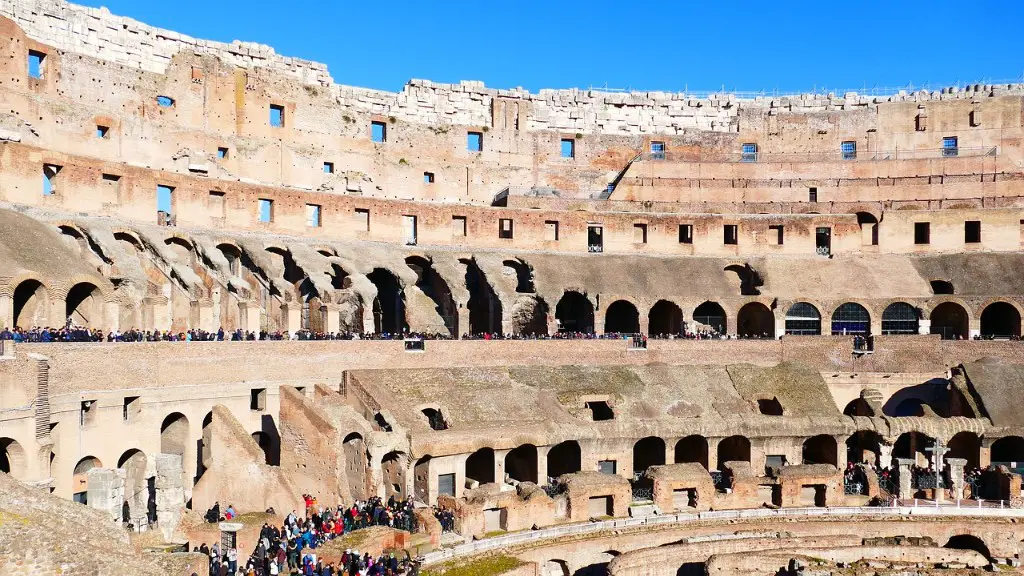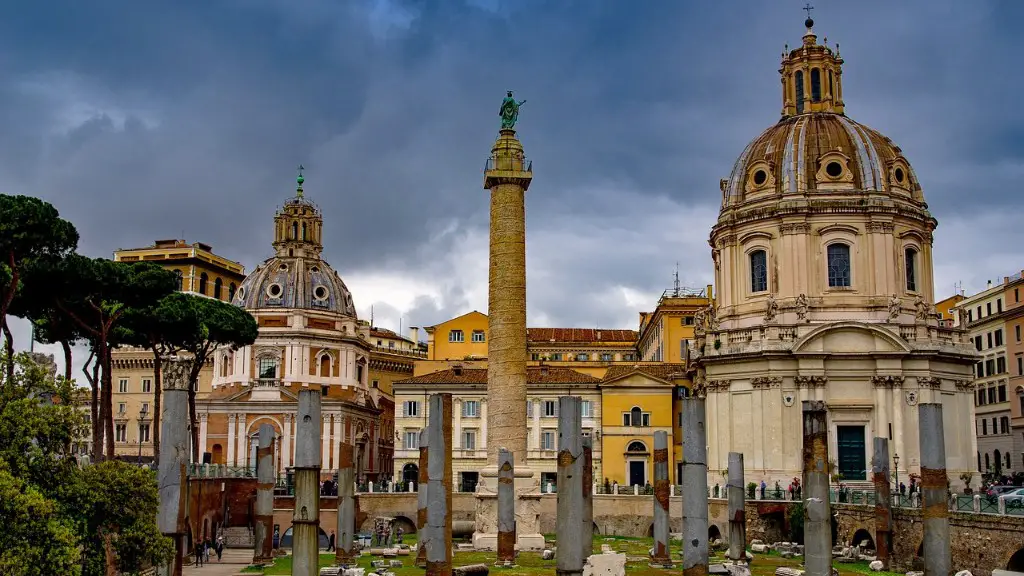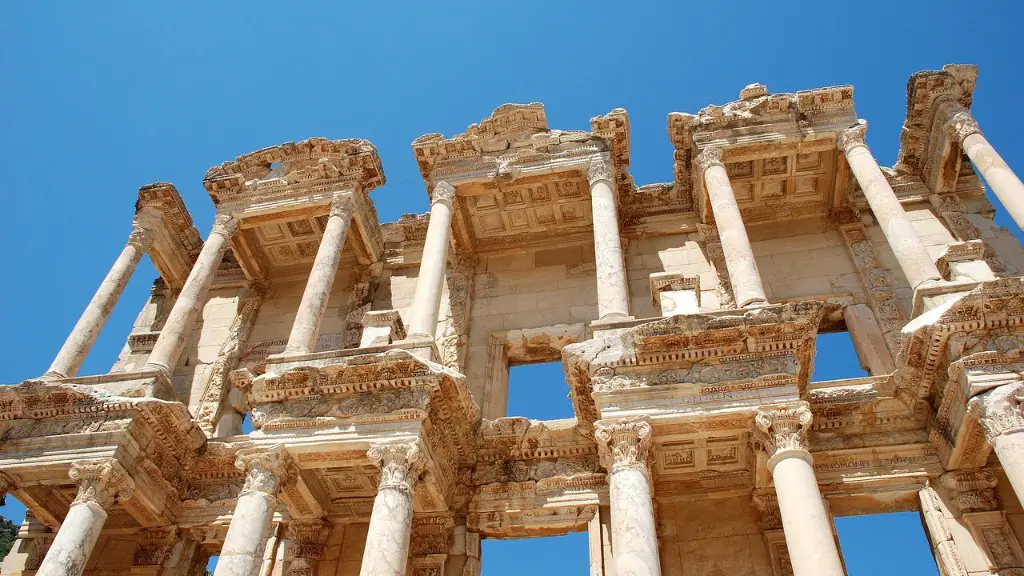Ancient Rome, one of the greatest and most influential civilizations of all time, is known for its impressive architecture, political power, and religious culture. But what about the homes of the Roman nobility? Where did the rich, powerful, and privileged live?
The homes of the Roman nobility were referred to as ‘domus’. These luxurious residences featured richly decorated interiors and were designed to reflect the wealth and status of their occupants. Generally, the domes were arranged around a central courtyard and could house a whole family. In some cases, the houses could be two or more stories tall and even included an additional area for servants – a sort of ‘in-house staff’.
For the highest ranking nobles, however, the residences were far more extravagant. These included luxurious villas with extensive gardens, pools, tapestries, and other fineries. These homes typically incorporated some of the latest architectural trends, such as vaulting ceilings and atriums. In some cases, they could even feature rooftop terraces with spectacular views of the city below.
Roman patricians and aristocrats who could afford to live in such grand homes resided in Rome’s exclusive neighborhoods – such as the Palatine Hill and the Esquiline Hill – where their powerful position was often symbolically represented. However, it was not uncommon for noble families to have residences in other parts of the city, or even outside of the city.
It should be noted that many Roman aristocrats and political elites had numerous homes across the empire, so domestic luxury was not limited to the capital. The wealthy Roman senator, for example, might keep a villa in a coastal town, a hunting lodge in the mountains, and a country estate in the countryside. Though these estates were not as grand as their urban counterparts, they still reflected their owner’s wealth and importance.
While the presence of these lavish homes provided aristocratic Romans with a status symbol of their power, they also served as an example of Roman wealth and extravagance. This was showcased in the artwork found within the domus, which depicted the home’s occupants enjoying luxurious lifestyle experiences, such as extravagant banquets, hunting trips, and chariot races.
It is clear that the Roman nobility enjoyed a lifestyle of luxury and extravagance. The domus were grandiose symbols of their wealth and power, but they also showcased the Roman Empire’s economic and political power on the world stage.
Luxurious Entertainment
The luxurious lifestyle of the Roman aristocracy extended to their entertainment. The wealthy had access to some of the most sophisticated plays and concerts in the world, as well as elaborate feasts and wild parties. In addition, the wealthy were known to indulge in lavish displays of people, art, and music. The most exclusive events were often held in the residences of the patricians and aristocrats, where guests were wowed by magnificent displays of wealth and opulence.
It was not uncommon for these events to feature live performances of music, dance, and theatre. Attendees were also treated to some of the finest foods and wines from across the empire. These lavish banquets would often last for days, with guests enjoying sumptuous feasts and hot music well into the early hours of the morning.
For wealthy Romans, entertainment was about more than just having a good time. It was also about being seen. These extravagant events were often held to show off the host’s wealth and influence, as well as create ties with powerful and influential people from across the empire. This aspect of entertainment also explained the excess associated with Roman events.
Whether it was grand performances, sumptuous banquets, or elaborate parties, the Roman nobility certainly knew how to live their lives in the lap of luxury.
Opulence and Adornment
The wealthy Roman patricians and aristocrats had a reputation for opulence and extravagance. Their homes and gardens were often decorated with luxurious artwork and furniture, as well as elaborate tapestries, statues, and mosaics. Even the rooms of the domus were decorated with lavish marble, coloured glass, and frescoes.
As with the entertainment, the ostentatious decoration of the domus had a practical purpose. Much like the lavish events, these grand decorations were meant to impress guests and emphasise their power and influence. For this reason, Roman nobility often visited each other’s homes to show off their wealth and magnificence.
The luxurious lifestyle of the Roman nobility was also reflected in the way they dressed. The women of the upper classes adorned themselves with fine fabrics, jewels, and cosmetics, while the men would often wear expensive tunics and cloaks made of silk and other fine materials. Wanting to show their status and wealth, even the children of the Roman nobility were often dressed in the finest clothes.
From their homes to their daily wardrobe, the Roman nobility did not hesitate to spend money and show off their wealth. Indulgence and luxury were reflected in the way they lived their lives, and it was part and parcel of their upper-class lifestyle.
Legacy of Roman Nobility
The conspicuous consumption of the Roman nobility was both a reflection and a consequence of their economic and political power. Their lavish homes and extravagant lifestyles were seen as symbols of their wealth and influence, and as such, they had a significant impact on the culture and society of the time.
The legacy of Roman nobility can still be seen today. Their love of opulence and luxury has become part of our collective understanding of the ancient world, and their grand homes, party palaces, and symbol of social status are all a part of their enduring legacy.
At the same time, we can also see the influence that these wealthy Romans had on their society and culture. Their patronage of the arts and open embrace of luxury and extravagance had a lasting influence on the culture of the Roman Empire and beyond.
Daily Lives of Roman Nobility
The everyday life of the Roman nobility was punctuated by wealth and privilege. Daily rituals such as bathing and dining were held in grand spaces, and their homes were full of exotic and luxurious items. Great attention was given to matters such as etiquette, with upper-class Romans attending to their appearances, conversing in Latin, and engaging in the latest philosophical debates.
In addition to enjoying the luxuries of their status, the Roman nobility also engaged in leisure pursuits such as horse-riding, hunting, and other outdoor activities. They also took part in chariot racing, arena shows, and other forms of entertainment.
The Roman nobility spent their days surrounded by luxury and privilege, while also indulging their passions and hobbies. It was certainly a life of comfort and privilege.
Power and Politics
The privileged position of the Roman nobility was not only reflected in their lifestyle, but also in their political influence. The Roman Senate was full of patricians, and the citizens of Rome were led by their wealthy and powerful leaders in matters of war, political decisions, and trade.
The Roman nobility also held influence in the judicial system. Upper-class citizens had the authority to serve as jury members, while they also had the power to pardon individuals or reduce sentences. This power rested firmly in the hands of the patricians.
Political power and influence also extended to the provinces. Roman magistrates were typically chosen from a select group of noble families, allowing them to shape and influence their provinces in ways that favoured their own interests.
The Roman nobility had a significant influence over the political and legal systems of the empire. Their privileged position gave them the power to shape the Roman government, trade, and justice.
Influence on the Culture and Society
The influence of the Roman nobility extended far beyond the political and legal spheres. Their wealth, power, and privilege were also evident in the arts and culture. They were patrons of the arts, sponsoring plays, concerts, and other forms of entertainment. They also often commissioned works of art, and their domus often featured luxurious artwork, sculptures, and decorations.
The Roman nobility also played a key role in the expansion of the Roman Empire, using their power and influence to secure lucrative trade deals and military ventures. This in turn led to the spread of Roman culture and values, influencing the societies and cultures of people in lands far away from Rome.
The wealthy Roman patricians and aristocrats had tremendous influence and power. Their wealth, privilege, and influence allowed them to shape the political, economic, and cultural landscapes of the Roman Empire.
